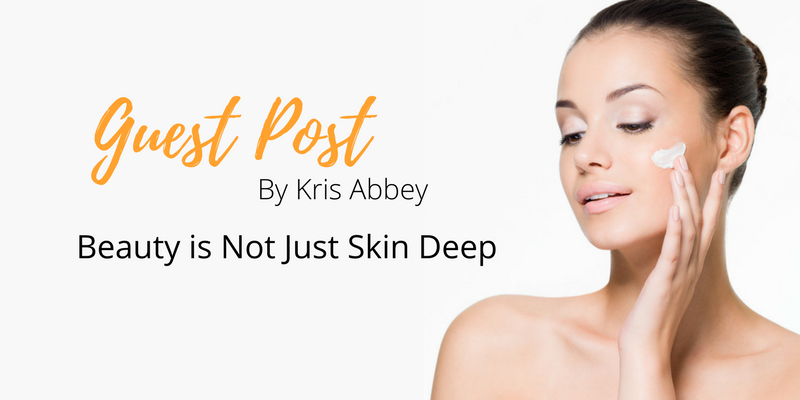

Women may be wary about eating genetically modified food, but when it comes to skincare or cosmetics, if it promises us to banish cellulite, rid of stretch marks or dissolve fat, despite involving a slight chance of developing cancer or some other serious illness, we’d probably take the risk, no questions asked.
However, chemicals don’t just creep into our bodies through the food we eat. Many cosmetics are laden with them and our skin acts as a transporter, not a barrier, and over a lifetime we load our body with dangerous chemicals – all in the name of beauty!
The average female will consume 1 kilogram of lipstick and at least 60 kilograms of skincare creams in her lifetime. This definitely puts a new slant on the phrase ‘food for your skin’!
Imagine the following beauty routine: cleanse with coal tar, scrub with brake fluid, apply a mask that is known to have carcinogenic properties, then finish off with a moisturiser that will increase the risk of sun damage and may cause blistering, rash and skin discolouration. It sounds like a regime that no-one in his or her right mind would use, right? Wrong! If you use some of the top brand name cosmetics currently on the market in Australia, you may well be subjecting your skin to just such a regime. With so little regulation and so few testing requirements, there remains a big question mark over the safety of the cosmetics that we use on a daily basis.
There are more than 5,000 ingredients being used to manufacture cosmetic products in the world today. According to the Journal of the American Medical Association, no long-term safety data exists for most of these ingredients. By far the most common problem experienced by consumers of cosmetics is sensitivity reactions. Eczema, psoriasis, dermatitis and dry skin are some of the direct results of these reactions. Even though the reaction may not be immediate, repeated exposure to an offending ingredient can develop into sensitivity.
A study into cosmetic reactions by The North American Contact Dermatitis Group (a task force set up by The American Academy of Dermatology) found that hair preparations, facial cleansers, moisturisers and make-up including foundation and blusher were the worst offenders. Ingredients such as fragrances, preservatives, lanolin and skin softeners are responsible for a variety of reactions, most of which go unreported as people tend to simply stop using the product and move on to something else. Almost all cosmetics contain fragrances; partly to mask any offensive odour originating from the raw materials used. Fine fragrances generally have the highest amounts of allergens, however even products marked ‘fragrance free’ often have small amounts of fragrance to mask other odours, but not in sufficient amount to impart a noticeable scent themselves. One Dutch study of eczema patients found that 45% of reactions to cosmetics were due to the fragrance used.
Did you know that about 60% of what we put on our skin is absorbed into the bloodstream? The results of studies into the toxicity of personal care products are not pretty. The Journal of Clinical Epidemiology published a study that concluded that the use of aluminium-based antiperspirants increased the risk of Alzheimer’s disease. We’ve included a list of antiperspirants that do not include aluminium here.
FDC Red 4, FDC Red 1 or Food Red 1 was banned in 1964, and again in 1976. Believe it or not, in between this period it was deemed OK for maraschino cherries. It is again banned in all food as it is a known cause of urinary bladder polyps and atrophies (shrinks) the adrenal glands. But, despite all of this, it is allowed to be used in cosmetics that are for external use only. Remember, what goes on our skin can still end up in our blood stream.
Offending Ingredients
Take a look at the ingredients listed on the top-selling brands of cosmetic products and you are likely to see the word ‘paraben’, which is the most-commonly used preservative. Preservatives are needed in most cosmetics because the ingredients are otherwise susceptible to microbial growth. Methyl paraben, the preservative that is most harmful to people with ‘sensitive skin’, also happens to be most frequently used, followed by propyl paraben, phenoxyethanol and quaternium 15.
Studies conducted on fish and mice found that parabens influenced their reproductive organs, causing genital tract abnormalities and decreased sperm production. Another common ingredient in cosmetics, propylene glycol, is used to provide texture and stability, but it can also cause adverse reactions. This is the same chemical found in brake fluid and antifreeze!
Coal tar, shown on labels as ‘FD&C or D&C colours’, is found in shampoo and conditioners, as well as other cosmetics. It is derived from petroleum and there are about 45 varieties on the market. Absorbed through the skin, many of these colour additives can interact with DNA, potentially causing mutations that may lead to cancer. They have also been linked to allergic reactions resulting in asthma attacks, headaches, nausea, fatigue, nervousness and lack of concentration.
With such a cocktail of ingredients in cosmetics, it is little wonder that mixing them together can prove so disastrous. Nitrosamines, though not primary ingredients in cosmetics, are formed when two otherwise safe ingredients—nitrous acid and amines—are combined. The resulting mix is highly carcinogenic and readily absorbed into the skin. Watch for the words DEA (dietha-nolamine) or MEA (monoetha-nolamine), two very toxic nitrosamines.
The Ingredients
Most companies believe that the quantities of a potentially harmful ingredient in their cosmetics are contained in such small amounts, it’s unlikely to cause any harm. But there are a number of issues they need to consider (and often don’t):
- What is the accumulative effect of these chemicals when used repeatedly?
- What is the potential effect of the combination of these chemicals in the body and in the environment?
- How do these chemicals breakdown in the body and the environment, and what other substances do they form?
It is worth taking the time to understand what ingredients you’re putting on your body, as your skin is your largest organ.

About Kris Abbey
Kris Abbey is a leading expert on Spa and Wellness, and the publishing editor of Spa Life magazine. She recently launched Spa & Wellness International website and you can find her on Instagram and Facebook where she shares her knowledge and passion for living a healthy life. She believes in eating clean, keeping fit and being kind to your body with what you put in and on it.
« Previous post | Next post »
2 responses to “Guest Post: Beauty is Not Just Skin Deep”
Leave a Reply

Follow Us On Instagram
No images found!Try some other hashtag or username



I needed to thank yօu for this wonderful read!! I certainly enjoyed every
bit of it. I have you bookmarked tο look at neew stuff you post…
Oh yes! beauty is way beyond just the skin, many do not know this and should know.